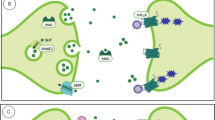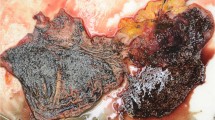Abstract
Introduction
Bupropion is the only Food and Drug Administration–approved synthetic cathinone. It increases the release of norepinephrine in the locus coeruleus and dorsal raphe nucleus, causing an increase in the frequency of serotonergic neuron firing. The diagnosis of serotonin toxicity (ST) from bupropion poisoning is controversial due to the lack of direct serotonergic activity. Nonetheless, there is one documented report of ST after single-agent bupropion overdose and multiple reports describing polypharmacy overdoses where bupropion may have contributed to ST.
Methods
This is a retrospective analysis of data collected by the Toxicology Investigators Consortium (ToxIC), a prospective multi-center toxico-surveillance and research network registry, from 2014 to 2017. Cases were identified if ST was a clinical effect and bupropion was the single agent listed. Data is presented descriptively.
Results
Of the 266 recorded single bupropion overdoses, the most common symptoms were seizures (47.1%), tachycardia (greater than 140 bpm) (33.9%), agitation (31.7%), toxic psychosis (20.4%), and myoclonus/tremor/hyperreflexia (19%). Benzodiazepines were the most common therapy (69.2%). Thirteen patients (5.9%) were diagnosed with ST by a medical toxicologist.
Conclusion
Bupropion overdose is primarily associated with seizures, tachycardia, and agitation; bupropion may be an atypical cause of serotonin toxicity.

Similar content being viewed by others
References
Stassinos GL, Klein-Schwartz W. Bupropion “abuse” reported to US poison centers. J Addict Med. 2016;10(5):357–62. https://doi.org/10.1097/ADM.0000000000000249.
Foley KF, DeSanty KP, Kast RE. Bupropion: pharmacology and therapeutic applications. Expert Rev Neurother. 2006;6(9):1249–65. https://doi.org/10.1586/14737175.6.9.1249.
Davidson J. Seizures and bupropion: a review. J Clin Psychiatry. 1989;50(7):256–61.
Spiller HA, Ramoska EA, Krenzelok EP, Sheen SR, Borys DJ, Villalobos D, et al. Bupropion overdose: a 3-year multi-center retrospective analysis. Am J Emerg Med. 1994;12(1):43–5.
Reaume M, Parmar M, Tanase A, Rosenblatt R. A fatal case of bupropion-induced cardiotoxicity refractory to impella placement. C41. CRITICAL CARE CASE REPORTS: TOXICOLOGY AND POISONINGS. Am Thoracic Soc; 2019. p. A4817-A.
Caillier B, Pilote S, Castonguay A, Patoine D, Menard-Desrosiers V, Vigneault P, et al. QRS widening and QT prolongation under bupropion: a unique cardiac electrophysiological profile. Fundam Clin Pharmacol. 2012;26(5):599–608. https://doi.org/10.1111/j.1472-8206.2011.00953.x.
Xiang XM, Phillips DJ. Nonepileptic myoclonus following bupropion overdose. Clin Pediatr (Phila) 2017:9922817737082.
Ferris R, White H, Cooper B, Maxwell R, Tang F, Beaman O, et al. Some neurochemical properties of a new antidepressant, bupropion hydrochloride (Wellbutrin™). Drug Dev Res. 1981;1(1):21–35.
Cooper BR, Wang CM, Cox RF, Norton R, Shea V, Ferris RM. Evidence that the acute behavioral and electrophysiological effects of bupropion (Wellbutrin) are mediated by a noradrenergic mechanism. Neuropsychopharmacology. 1994;11(2):133–41.
Rau KS, Birdsall E, Hanson JE, Johnson-Davis KL, Carroll FI, Wilkins DG, et al. Bupropion increases striatal vesicular monoamine transport. Neuropharmacology. 2005;49(6):820–30. https://doi.org/10.1016/j.neuropharm.2005.05.004.
Dong J, Blier P. Modification of norepinephrine and serotonin, but not dopamine, neuron firing by sustained bupropion treatment. Psychopharmacology. 2001;155(1):52–7.
El Mansari M, Ghanbari R, Janssen S, Blier P. Sustained administration of bupropion alters the neuronal activity of serotonin, norepinephrine but not dopamine neurons in the rat brain. Neuropharmacology. 2008;55(7):1191–8.
Ghanbari R, El Mansari M, Blier P. Enhancement of serotonergic and noradrenergic neurotransmission in the rat hippocampus by sustained administration of bupropion. Psychopharmacology. 2011;217(1):61–73.
Haddjeri N, Lavoie N, Blier P. Electrophysiological evidence for the tonic activation of 5-HT(1A) autoreceptors in the rat dorsal raphe nucleus. Neuropsychopharmacology. 2004;29(10):1800–6. https://doi.org/10.1038/sj.npp.1300489.
Fleckenstein AE, Volz TJ, Riddle EL, Gibb JW, Hanson GR. New insights into the mechanism of action of amphetamines. Annu Rev Pharmacol Toxicol. 2007;47:681–98. https://doi.org/10.1146/annurev.pharmtox.47.120505.105140.
Thorpe EL, Pizon AF, Lynch MJ, Boyer J. Bupropion induced serotonin syndrome: a case report. J Med Toxicol. 2010;6(2):168–71. https://doi.org/10.1007/s13181-010-0021-x.
Gillman PK. Bupropion, bayesian logic and serotonin toxicity. J Med Toxicol. 2010;6(2):276–7. https://doi.org/10.1007/s13181-010-0084-8.
Wax PM, Kleinschmidt KC, Brent J, Investigators ATCR. The toxicology investigators consortium (ToxIC) registry. J Med Toxicol. 2011;7(4):259–65. https://doi.org/10.1007/s13181-011-0177-z.
Farrugia LA, Rhyee SH, Campleman SL, Judge B, Kao L, Pizon A, et al. The toxicology investigators consortium case registry-the 2017 annual report. J Med Toxicol. 2018;14(3):182–211. https://doi.org/10.1007/s13181-018-0679-z.
Stall N, Godwin J, Juurlink D. Bupropion abuse and overdose. Can Med Assoc J. 2014;186(13):1015.
Shepherd G, Velez LI, Keyes DC. Intentional bupropion overdoses. J Emerg Med. 2004;27(2):147–51. https://doi.org/10.1016/j.jemermed.2004.02.017.
American Association of Poison Control Centers. National Poison Data System (NPDS) NPDS Coding Users’ Manual©2014.
Ferris RM, Beaman OJ. Bupropion: a new antidepressant drug, the mechanism of action of which is not associated with down-regulation of postsynaptic beta-adrenergic, serotonergic (5-HT2), alpha 2-adrenergic, imipramine and dopaminergic receptors in brain. Neuropharmacology. 1983;22(11):1257–67.
Munhoz RP. Serotonin syndrome induced by a combination of bupropion and SSRIs. Clin Neuropharmacol. 2004;27(5):219–22.
Gollapudy S, Kumar V, Dhamee MS. A case of serotonin syndrome precipitated by fentanyl and ondansetron in a patient receiving paroxetine, duloxetine, and bupropion. J Clin Anesth. 2012;24(3):251–2. https://doi.org/10.1016/j.jclinane.2011.04.017.
Dunkley EJ, Isbister GK, Sibbritt D, Dawson AH, Whyte IM. The hunter serotonin toxicity criteria: simple and accurate diagnostic decision rules for serotonin toxicity. QJM. 2003;96(9):635–42.
Funding
This work was unfunded.
Author information
Authors and Affiliations
Consortia
Corresponding author
Ethics declarations
Conflict of Interest
None.
Disclaimer
The view(s) expressed herein are those of the author(s) and do not reflect the official policy or position of the US Air Force Office of the Surgeon General, the Department of the Air Force, the Department of Defense, or the US Government.
Additional information
Supervising Editor: Gillian Beauchamp, MD
Publisher’s Note
Springer Nature remains neutral with regard to jurisdictional claims in published maps and institutional affiliations.
Rights and permissions
About this article
Cite this article
Murray, B., Carpenter, J., Dunkley, C. et al. Single-Agent Bupropion Exposures: Clinical Characteristics and an Atypical Cause of Serotonin Toxicity. J. Med. Toxicol. 16, 12–16 (2020). https://doi.org/10.1007/s13181-019-00749-4
Received:
Revised:
Accepted:
Published:
Issue Date:
DOI: https://doi.org/10.1007/s13181-019-00749-4




